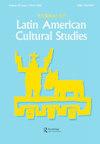Violence, Affect, and Time-Based Media in Mexico, 2010–2019
IF 0.3
4区 社会学
Q4 CULTURAL STUDIES
引用次数: 0
Abstract
This essay examines what affect studies can contribute to the analysis of violence and audiovisual media in twenty-first-century Mexico, paying particular attention to the temporal nature of violence and of time-based media. Does the photo of a dead child and her father on the Mexico-US border, as seen on the front page of a newspaper, allow viewers to perceive the slow violence of neoliberal economies and contemporary immigration policies? Or does it merely encourage shallow cries of pity? Given today’s saturated and vertiginously paced mediascape, do feature films have any role to play in encouraging audiences to viscerally recognise the duration and weight of state repression? In order to adequately analyse the complex sensorial dynamics of audiovisual media, this essay begins by proposing a tripartite conceptual framework that recognises multiple and inter-related forms of violence, overlaid audiovisual economies, and the contemporary scopic regime. The essay then deploys this framework in a comparison of the sensorial engagements of two recent films: Desierto (Jonas Cuarón, 2015) and Ayotzinapa, el paso de la tortuga (Enrique García Meza, 2017).墨西哥暴力、情感和基于时间的媒体,2010-2019
本文探讨了影响研究对21世纪墨西哥暴力和视听媒体分析的贡献,特别关注暴力和基于时间的媒体的时间性质。报纸头版上那张在美墨边境上死去的孩子和她父亲的照片,是否让观众看到了新自由主义经济和当代移民政策的缓慢暴力?或者它只是鼓励了肤浅的怜悯之声?考虑到今天饱和和节奏令人眩晕的媒体环境,故事片在鼓励观众发自内心地认识到国家镇压的持续时间和重要性方面有什么作用吗?为了充分分析视听媒体的复杂感官动态,本文首先提出了一个三方概念框架,该框架承认多种相互关联的暴力形式、叠加的视听经济和当代视野制度。然后,本文将这一框架用于比较最近两部电影的感官参与:《欲望》(Jonas Cuarón, 2015)和《阿约齐纳帕,el paso de la tortuga》(Enrique García Meza, 2017)。
本文章由计算机程序翻译,如有差异,请以英文原文为准。
求助全文
约1分钟内获得全文
求助全文

 求助内容:
求助内容: 应助结果提醒方式:
应助结果提醒方式:


